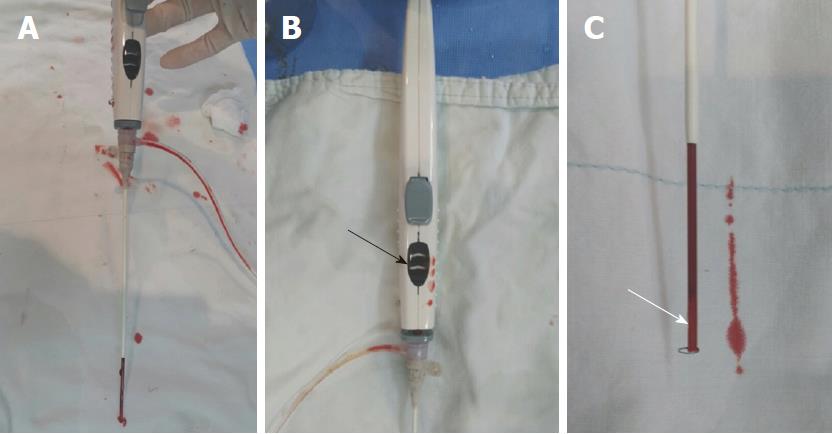Copyright
©The Author(s) 2018.
World J Radiol. Sep 28, 2018; 10(9): 108-115
Published online Sep 28, 2018. doi: 10.4329/wjr.v10.i9.108
Published online Sep 28, 2018. doi: 10.4329/wjr.v10.i9.108
Figure 3 Representations of device appearances when failures occurred.
Normally, when the vascular closure devices (VCDs)/sheath assembly is pulled backward, the distal loop changes to a longitudinal shape and the plug is placed just above the arteriotomy. At this point, the indicator changes to black. When this indicator changes to black, pressing of the button deploys the plug. In this case, however, the indicator still did not turn black and the plug could not be dropped, even though the VCDs/sheath came out of the skin. A: Full view of VCDs/sheath in case of device failure; B: The color of the indicator window was white (black arrow); C: The polyglycolic acid plug (white arrow) remained in the delivery shaft of the ExoSeal.
- Citation: Han Y, Kwon JH, Park S. Korean single-center experience with femoral access closure using the ExoSeal device. World J Radiol 2018; 10(9): 108-115
- URL: https://www.wjgnet.com/1949-8470/full/v10/i9/108.htm
- DOI: https://dx.doi.org/10.4329/wjr.v10.i9.108









